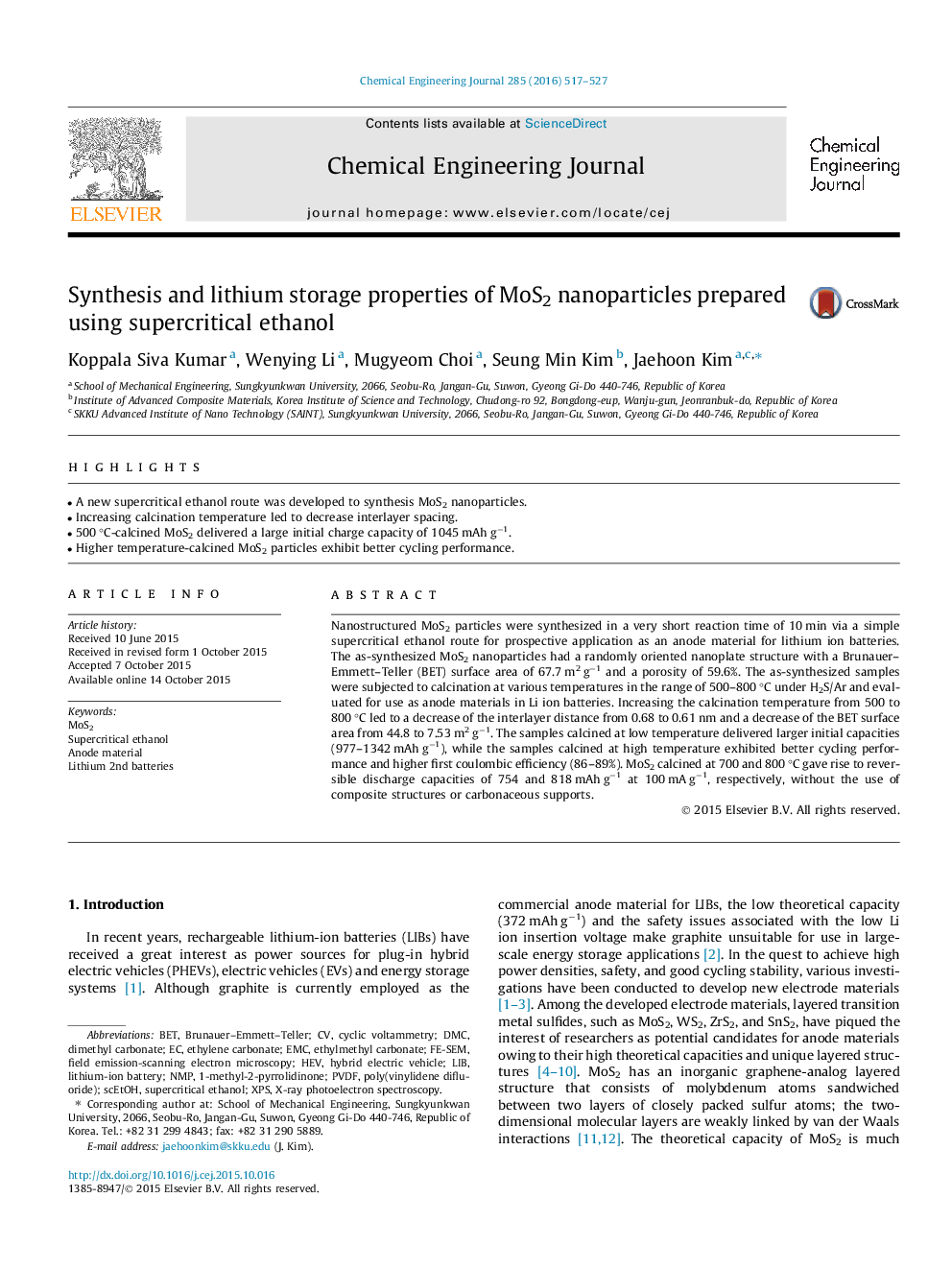| Article ID | Journal | Published Year | Pages | File Type |
|---|---|---|---|---|
| 6583420 | Chemical Engineering Journal | 2016 | 11 Pages |
Abstract
Nanostructured MoS2 particles were synthesized in a very short reaction time of 10 min via a simple supercritical ethanol route for prospective application as an anode material for lithium ion batteries. The as-synthesized MoS2 nanoparticles had a randomly oriented nanoplate structure with a Brunauer-Emmett-Teller (BET) surface area of 67.7 m2 gâ1 and a porosity of 59.6%. The as-synthesized samples were subjected to calcination at various temperatures in the range of 500-800 °C under H2S/Ar and evaluated for use as anode materials in Li ion batteries. Increasing the calcination temperature from 500 to 800 °C led to a decrease of the interlayer distance from 0.68 to 0.61 nm and a decrease of the BET surface area from 44.8 to 7.53 m2 gâ1. The samples calcined at low temperature delivered larger initial capacities (977-1342 mAh gâ1), while the samples calcined at high temperature exhibited better cycling performance and higher first coulombic efficiency (86-89%). MoS2 calcined at 700 and 800 °C gave rise to reversible discharge capacities of 754 and 818 mAh gâ1 at 100 mA gâ1, respectively, without the use of composite structures or carbonaceous supports.
Keywords
Related Topics
Physical Sciences and Engineering
Chemical Engineering
Chemical Engineering (General)
Authors
Koppala Siva Kumar, Wenying Li, Mugyeom Choi, Seung Min Kim, Jaehoon Kim,
